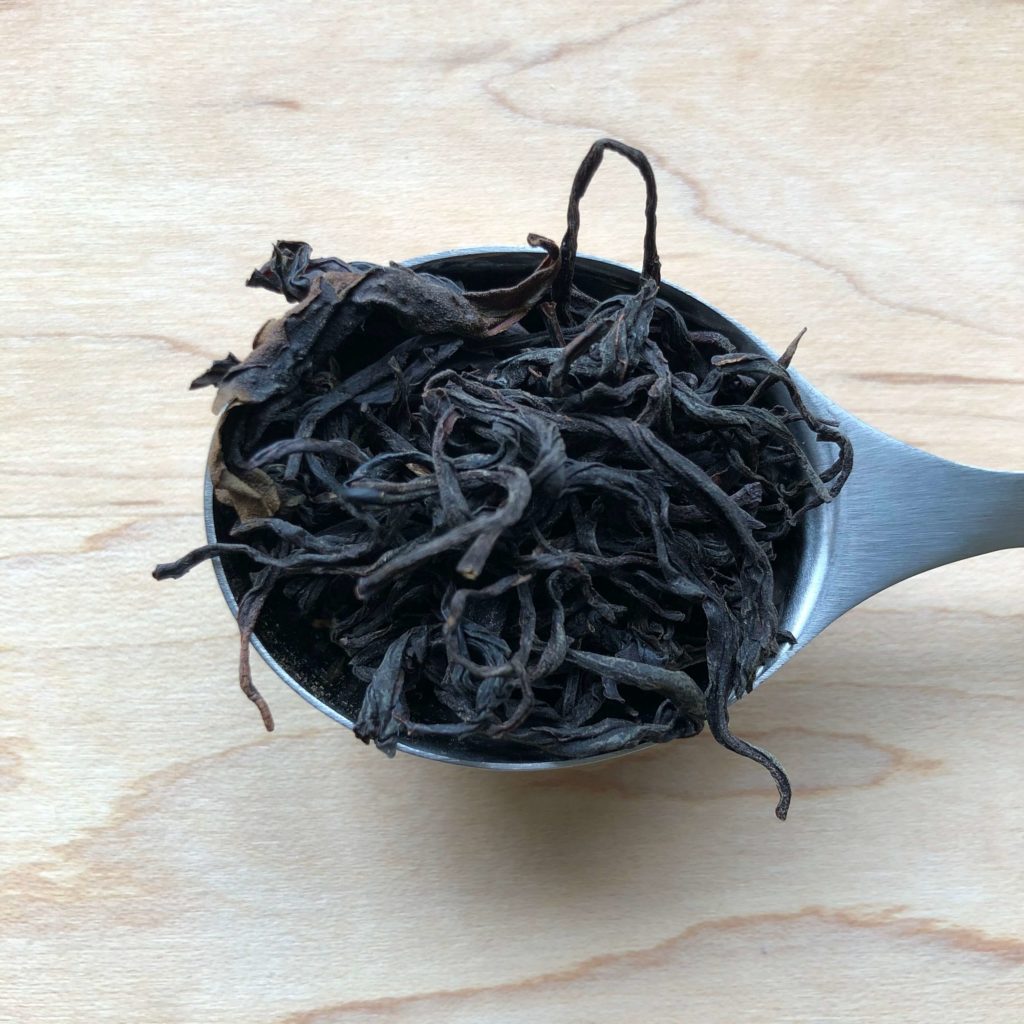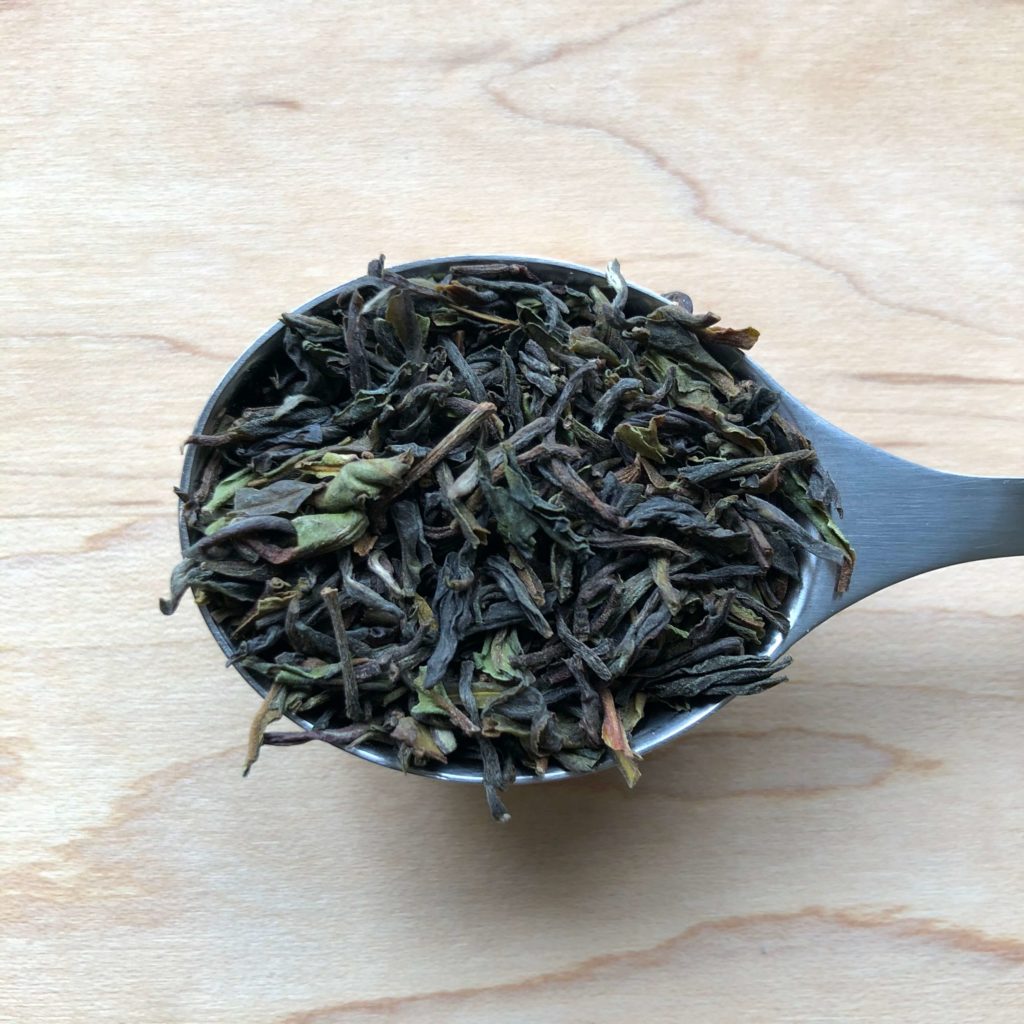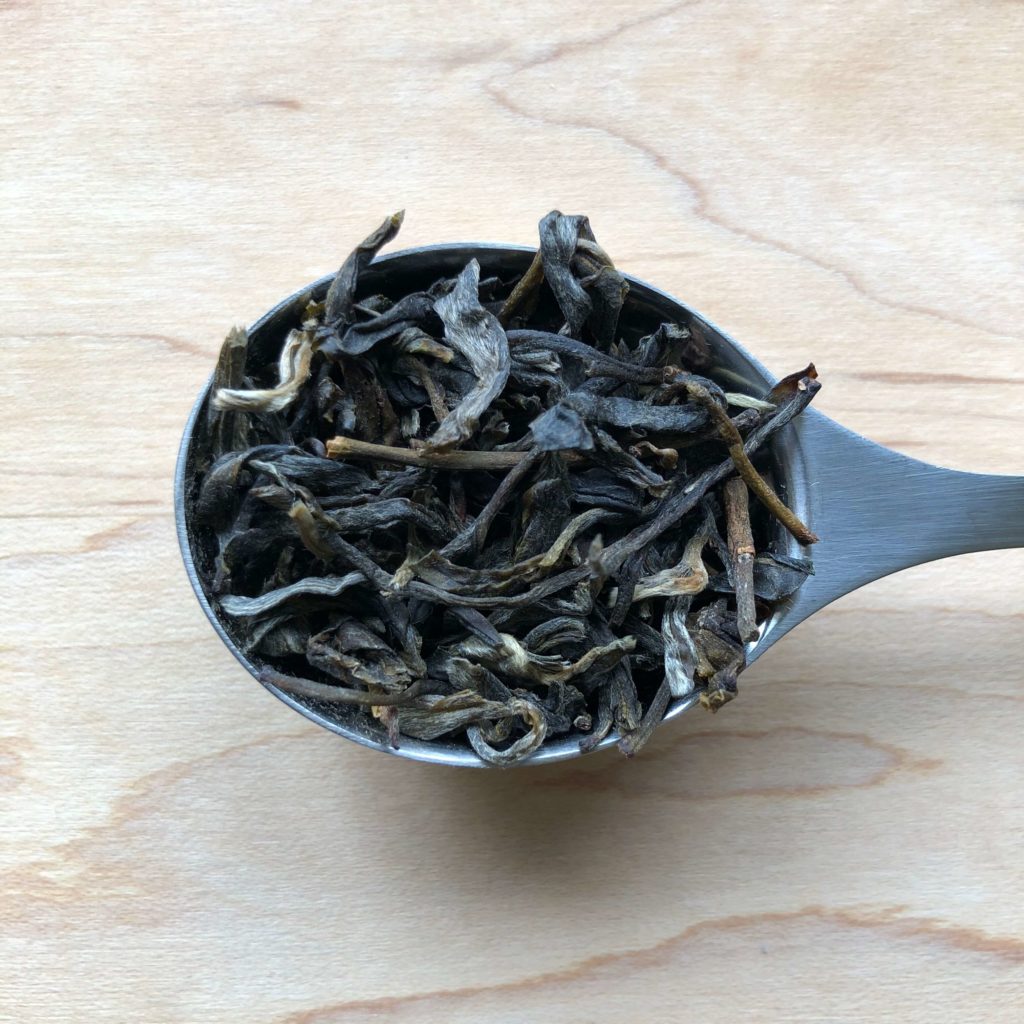
For the last two weeks, I have shared my experience attending Camellia Sinensis’ first virtual Summer Session! This week, I will be reviewing the last three teas of the event!
As mentioned in my previous posts, Camellia Sinensis offered two online sessions; one in English (August 8th) and one in French (August 9th). I also purchased the 8 teas showcased during the event. The live stream was open to the public and archived online.
This is the last post of my 3 part series on the event. Over the last two weeks, I recapped the English live session, as well as 5 of the 8 teas tasted during the event! The posts have been broken down based on how Kevin Gascoyne from Camellia Sinensis presented them during the event. This week we will be tasting two black teas and a pu-erh.
- PART 1 (two week’s post): Information about the course, the live session, and reviews for Sencha Tenryu and Shan Lin Xi;
- PART 2 (last week’s post!): Reviews for Jingning Yin Zhen, Long Jing Jingning Bai, Tong Tian Xiang; and,
- PART 3 (this post): Reviews for Darjeeling 1st Flush Singell; Jin Guan Yin Hong and, Pu Er Sheng 2020 Yongde Da Shan.
- Note: As I was re-watching the live session, I realized I mixed up the order of the Darjeeling 1st Flush Singell and Jin Guan Yin Hong! Please excuse that!
Lastly, for more information regarding the live session and the other teas, read my Part 1 and Part 2 of the series! With some basic information about the event, let’s go!
Darjeeling 1st Flush Singell DJ-5

Description: “Its herbaceous and floral notes contribute a surprising lightness to this fine and refreshing tea!”
Instructions: 7 grams | 200 ml* | 95°C
*It was not indicated during the event how much water to use, so I used a 200ml ceramic pot
Review: I wasn’t surprised to see a Darjeeling tea included as part of the event as Kevin has been visiting the area for decades. Last year, I attended the showing of the documentary ‘Champagne of Teas’ which followed Kevin on his annual journey travelling to the Himalayas to select teas from Darjeeling tea gardens.
Kevin gave a brief history of the Darjeeling region. Tea was originally grown in India to replace China’s monopoly on tea. Two types of teas were grown in India: tea seeds from China and the Assamica plants which were found on the border of Myanmar. The tea then travelled from the Indian Himalayas to Nepal.
This specific tea comes from Singell Tea Estate from the “heritage” section of the garden which is comprised of 150-year-old tea bushes originating from the Wuyi Region in China. The bushes were planted in the late 1800s and have deep root systems. These teas are defined as ‘classic’ since the plants were grown from seeds versus clonal which is clonal cuttings or clonal propagation. Due to the higher altitude, sun hours, and different terroir than in China, the tea therefore tastes different despite being from the same seeds!
The tea was picked in early April 2020 at 1,800 m. All the tea came from a single invoice which means all the tea was made in one day. the DJ-5 is the invoice number.
I have only had a handful of Darjeeling teas, so it was interesting to hear Kevin relate the flavour to being similar to sheng pu’er (raw pu’er). Kevin demonstrated the tea using gong fu style. I did not have a Taiwanese Ru pot, but I did have a Taiwanese porcelain teapot which I used instead.
As a first flush tea, it was processed as a “hard withered black tea” which means the withering process was extended to trap more of the aromatic chemicals and the leaves were much drier which produced a greener leaf. Kevin described the dry leaves as “scrappy and broken,” which was a good description. It had a fresh grass and floral aroma and the leaves were a mixture of bright olive green and dark brown.

Infusion 1 (30 seconds): The liquor was a golden yellow colour with a fresh grassy, vegetal smell. Taste-wise, the liquor was grassy, and vegetal and had a bit of a peppery kick at the end of the sip.
Infusion 2 (10 seconds): The liquor was a slightly darker honey amber colour. It had a stronger aroma of fresh cut grass and raw leafy greens. The aroma and the liquor matched in smell and taste and were reminiscent of vegetables, and cut grass, and had some bitterness at the tail end. Once cooled, the liquor was more vegetal and had a stronger astringency.
Infusion 3 (20-30 seconds): After 25 seconds, the liquor still had a good amount of flavour and was vegetal, peppery, with some astringency.
After 3 infusions, the wet leaves were small and broken pieces with an olive brown colour. It smelled herbal and vegetal. Overall, I found this a very pleasant tea! It is nice to see how processing can have such a large impact on the tea. Kevin had mentioned that one of the producers made a batch of tea using the same processing in China and it would be interesting to see the difference Darjeeling teas are an area of tea I need to try more of (3/5 rating).
- Type: Black tea
- Origin: Darjeeling, India
- Caffeine: Unknown
- Ingredients: Unknown
- Company: Camellia Sinensis
Jin Guan Yin Hong

Description: “Releasing very little tannins during its infusion, the Jin Guan Yin Hong gives a smooth liquor with notes of sweet potato and dried fruits. Its fresh and lightly tart finish brings sourdough bread to mind.”
Instructions: 5 grams | 120 ml* | 95° C
*It was not indicated during the event how much water to use, so I used a 120 ml gaiwan
Review: Over the years, I have enjoyed the sweet notes of Chinese black teas. This one was interesting since it uses the Jin Guan Yin cultivar from the Wuyi Mountains which is normally used to produce oolong teas. During processing, the leaves were covered which built up a small amount of heat, slowed down the oxidation and caused some fermentation. This method is common in this part of China.
To brew the tea, Kevin used a glazed gaiwan and warmed the gaiwan and pitcher/fair cup. The tea was picked in April 2020 at 800m. The dark, almost black dry leaves are thin, twisted and wirey. It had a sweet, fruity and chocolate smell.
Infusion 1 (30 seconds): The liquor was a cooper colour and tasted sweet, fruity and of dates. Kevin also recommended smelling the pitcher/fair cup and it also was fruity and sweet, the gaiwan lid which was mildly earthy, fermented and tangy. Each has a different smell due to the different volatiles.
Infusion 2 (15 seconds): After a short infusion, the liquor was a slightly darker amber copper colour. The flavour was earthier but still had a fruity sweetness. There were also some floral notes and a hint of a tangy taste.
Infusion 3 (30 seconds): The tea started to be reminiscent of a mixture of black tea and oolong. It tasted fruity and floral, with some earthly malt richness. The leaves were half unfurled.
Infusion 4 (45 seconds): The liquor was lightly cloudy and had a punch of earthy, fruity and sweetness.
Infusion 5 (1 minute): After a minute, the liquor was sweet, earthy, cocoa, and had a lingering tangy note.

Infusion 6 (1 minute and 15 seconds): By this infusion, the liquor was much more earthy, and the sweet, fruity date notes were reappearing. The leaves had mostly unfurled.
Infusion 7 (1 minute and 30 seconds): The clarity of the liquor returned to clear and was a dark brown. The flavour was starting to mellow out.
On the company website, it mentioned that this tea would pair well with shortbread cookies. It was a lovely combination. The buttery texture of the shortbread, paired well with the sweet earthy notes of the tea and was a delight!
Infusion 8 (1 minute and 45 seconds): Taste-wise, the infusion was mostly mild with sweetness and earthiness at the end of the sip.
Infusion 9 (2 minutes ): The liquor was a brown colour and no strong flavour.
The wet leaves had an earthy roasted aroma and were a reddish khaki colour. Kevin noted that he does not use a timer and a scale and over 30 years, he has built up intuition. I would like to re-taste this and try brewing the tea without using a timer and scale and see how my notes compare!
I kept brewing the tea for the last few infusions more so because of how well it paired with the shortbread cookies! Of all the teas sampled during the event, this one is most likely my favourite one. I enjoyed the range of flavours and aromas (4.5/5 rating).
- Type: Black tea
- Origin: China
- Caffeine: Unknown
- Ingredients: Black tea
- Company: Camellia Sinensis
Pu Er Yongde Da Shan (Old Trees) 2020

Description: “The sweet taste strikes right through its intense tannins with maple and waffle aromas. Harvested from 75 years old trees, this tea can be enjoyed now or put aside to age.”
Instructions: 5 grams | 120 ml* | 95° C
*It was not indicated during the event how much water to use, so I used a 120 ml gaiwan
Review: As the name implies, the tea was harvested from da shan 75 years old “old trees.” The tea from the cake is from a single origin, and not tightly pressed. The leaves were a mixture of silvery buds and darker leaves with a musky, earthy and sweet licorice undertone.
Infusion 1 (10 seconds): The first infusion was a pale yellow and had a floral smell. It had a mellow floral and sweet taste with no bite.
Infusion 2 (15 seconds): The liquor was darker with small floaters and a stronger floral smell. In comparison to the first infusion, there was a stark change in taste, and the liquor was much more vegetal, artichoke, and spinach with a hint of mossy earthy at the tail end of the sip.
Infusion 3 (20 seconds): The liquor was an amber honey colour. Taste-wise, it was still vegetal, with some floral notes and astringency. Kevin noted that the tea could be infused more, so I tried it out!

Infusion 4 (35 seconds): The liquor reminded me of “maple water,” sweet, earthy and floral with some more astringency.
Infusion 5 (50 seconds): Similar to Infusion 4, however a more mellow floral taste and astringency.
Infusion 6 (1 minute and 5 seconds): There were some faint floral notes.
Infusion 7 and 8 (1 minute and 20 seconds / 1 minute and 35 seconds): The liquor was lighter in colour, subtle, but ended with some sweetness.
The wet leaves were olive green, with a floral, grassy and vegetal smell. The tea was very calming and had a nice sweetness to it. After reading the website, it mentioned to rinse, but I did not see that in the archived live session, so I did not rinse.
Overall. pu-er/pu-erh is an area I am still not the most familiar with, so I always like learning more. I normally end up (accidentally) ageing my pu ers so it was nice to taste one fresh! Last year, I went to Zhen Tea’s talk about pu’erh which also provided some basic information about old trees and pu’erh! I would like to try this tea aged in a year’s time as Kevin noted it would be a good one aged (3.5/5 rating)!
- Type: Pu-erh tea
- Origin: China
- Caffeine: Unknown
- Ingredients: Old tree tea
- Company: Camellia Sinensis
Final Thoughts
Overall, I am really glad I participated in the live session and purchased the teas that were a part of the tasting. I found the session very informative and Kevin provided a lot of information!
When I was tasting the teas, I would pause the video before Kevin would describe the tea and write down my own notes and then hear his opinion. It validating when he had similar tasting notes, but at the same time, if he described it differently or had additional notes, I would re-evaluate what I was tasting and it helped build my tasting vocabulary! I still have a lot to learn! I would highly recommend watching the live archive as it comes in both English and French.
The question of the post: Which tea would you like to drink?
- PART 1 (two week’s post): Information about the course, the live session, and reviews for Sencha Tenryu and Shan Lin Xi;
- PART 2 (last weeks’ post!): Reviews for Jingning Yin Zhen, Long Jing Jingning Bai, Tong Tian Xiang; and,
- PART 3 (this post): Reviews for Darjeeling 1st Flush Singell; Jin Guan Yin Hong and, Pu Er Sheng 2020 Yongde Da Shan.

1 comment
[…] taste was quite familiar to me and it took me some time to finally realize that it reminded me of a 1st Flush Darjeeling with its mixture of sweet fruity notes contrasted with the savoury grass ones. Since oolongs are […]